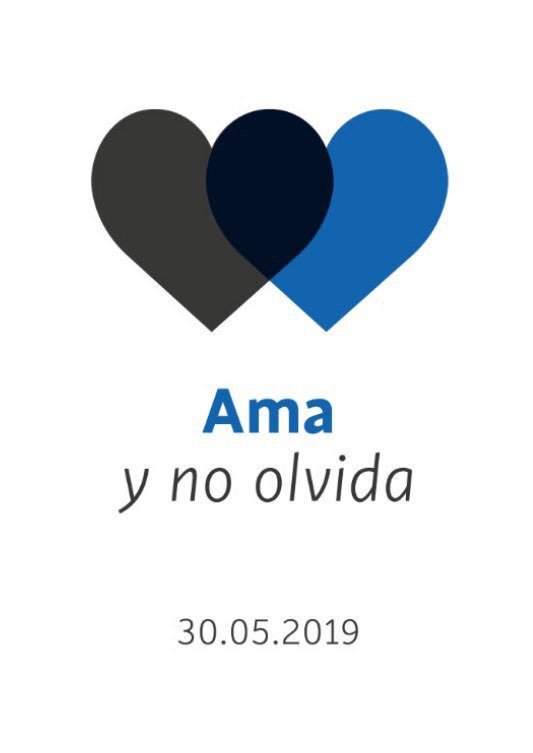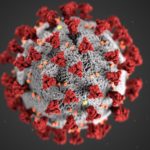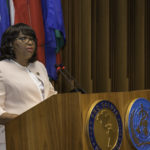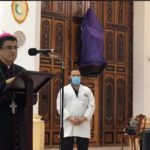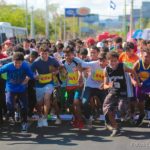On Mothers’ Day 2018, thousands of Nicaraguans flocked to Managua, to participate in the “Madre de Todas las Marchas”, a protest march in solidarity with the Mothers of April.
Un impresionante video aéreo de la marcha en honor a las #MadresDeAbril que muestra los miles y miles que se sumaron. #SOSNicaragua @confidencial_ni pic.twitter.com/z7wtMRkMkn
— Yader Luna (@Lunacero) May 30, 2018
It is estimated that between 500 and 700 thousand people marched that day, from the Jean Paul Genie Roundabout to Metrocentro.
“La Madre de todas las marchas” terminó en una masacre. Más de dieciséis personas murieron el 30 de mayo de 2018 en #Nicaragua y 88 más resultaron lesionadas. Fue el día de la mayor marcha. Y el más sangriento.
▶️ https://t.co/ZzSWUZlxkD ◀️ pic.twitter.com/JOFp9JHq7I— Abixael Mogollón (@abixael33) May 30, 2019
At approximately 5 pm, as Daniel Ortega was delivering his Mothers’ Day address at a government rally, the first reports of an attack on the Mothers’ Day March started trickling in via social media. La Prensa and other independent media reported live from the scene.
The investigation performed by the Interdisciplinary Group of Independent Experts (GIEI) concluded that use of firearms by “security forces and civilians under security force control” was disproportionate, when compared to the threat presented by protesters, “primarily holding homemade mortars.” GIEI also concluded that most victims were “killed by gunshot wounds to the head and chest.”
Eight people were killed immediately. By June 1, a total of nineteen had died of gunshot wounds, according to the GIEI report. Two of the deceased were Sandinista sympathizers; the rest were protesters. The youngest victim was 15 years old.
Anniversary Marked through Memorial Church Services.
The Asociación Madres de Abril commemorated the Mothers’ Day Massacre through memorial services, celebrated in Catholic churches in various cities across the country. The main one was held at the Cathedral of Managua, at 11 am local time.
💙🖤 ¡Madres de Abril invitan a una MISA en Catedral este 30 de Mayo! 💙🖤
Día: JUEVES 30 de MAYO
Hora: 11:00 A.M.
Local: CATEDRAL
VESTIR DE NEGRO y TRAER FLORES. INVITAMOS AL RESPETO Y TOLERANCIA EN NUESTRA CONVOCATORIA. pic.twitter.com/9k2PqrtRRs— Asociación Madres De Abril (AMA) (@MadresDeAbril) May 29, 2019
Memorial services were scheduled in León, Masaya, Jinotepe and other cities.
Todos los autoconvocados/as están invitados a la misa éste 30 de Mayo en la Parroquia Santiago Apóstol de #Jinotepe. No falten.
5:00 pm #SOSNicaragua#NacionAutoconvocada pic.twitter.com/8z4aTEK0kH— Mov. Nac. AutoConvocado Carazo (@ConvocadoCarazo) May 30, 2019
In Masaya, the memorial service was held at the Church of St. Michael the Archangel.
Llanto y dolor en misa dedicada a asesinados y presos políticos en el Día de las Madres nicaragüenses, en iglesia San Miguel, Masaya.@Manuel_Masaya pic.twitter.com/m8MqThxFj5
— Obrera de la Tecla (@obreradelatecla) May 30, 2019
Fr. Edwin Román addressed the flock at St. Michael. He said “Christ calls us to forgive, and we do forgive, but demanding justice is not the same as forgetting. We must ask for justice. No one escapes divine justice.”
Father Román added that Nicaraguans might not receive justice from “this dictatorial regime,” but “sooner or later, there will be justice for so many crimes that have been committed.”
Parte del mensaje que brindó el Padre Edwing Román, desde la Capilla de San Miguel, Masaya.
Cero Amnistía!#SOSNICARAGUA #ProhibidoOlvidar pic.twitter.com/zKu6WInUEG— Los Motivos del Lobo 🐺 (@LoboMY) May 30, 2019
The memorial service in León commemorated the lives of several victims from the city, including Sandor Dolmus, a fifteen-year old altar boy.
🖤💙¡Este 30 de mayo las madres continúan exigiendo verdad y justicia por el asesinato de sus hijos! 🖤💙
Misa en memoria de todos los hijos asesinados en el Templo San Francisco de León.
¡NI PERDÓN NI OLVIDO!
¡JUSTICIA!#SOSNicaragua pic.twitter.com/lh7ep5Q2OF— Asociación Madres De Abril (AMA) (@MadresDeAbril) May 30, 2019
In Managua, hundreds came to the Cathedral, carrying flags, crosses, photographs and signs memorializing the victims of the repression.
Las @MadresDeAbril entran a Catedral de Managua, con cruces y fotos de los asesinados por el régimen de Ortega y Murillo.#JusticiaParaLasMadres#UnidadNacional pic.twitter.com/bPzJ0WOZE4
— Unidad Nacional Azul y Blanco (@UnidadNic) May 30, 2019
Mourning mothers dressed in black.
Vestidas de negro y con las fotografías de sus hijos, así entraron las madres de abril a la Catedral de Managua. https://t.co/4moejpYE5a 👈🏻 pic.twitter.com/79t1bCdW1o
— Maje (@majenicaragua) May 30, 2019
The disappeared were not forgotten. This banner reads “Where are our disappeared?
¿Donde están nuestros desaparecidos? Se lee en Catedral de Managua#JusticiaParaNicaragua#UnidadNacional pic.twitter.com/4MH8lLig4A
— Unidad Nacional Azul y Blanco (@UnidadNic) May 30, 2019
At the Cathedral of Managua, Sermon Strikes Balance Between Defiance and Hope.
The memorial mass at the Cathedral of Managua was presided by Fr. Silvio Romero, Vicar of the Cathedral. Fr. Romero’s sermon was built around the theme of the “passage from death to life.”
“The Catholic Church celebrates the passage from death to life; therefore, let us not dwell on death, as that is a way in which we lose. It is a way to become demoralized,” said Romero, adding that “death does not have the final word; life does.”
Fr. Romero also examined the notion that there is nothing to celebrate on Mothers’ Day. He then used the story of the disciples on the road to Emmaus — Luke 24:13-35 — to argue that Nicaraguans do, in fact, have something to celebrate.
The disciples, he says, were also discouraged and thought there was nothing to celebrate, but when Jesus appeared to them, they regained hope. “Perhaps we’re experiencing the same thing that Cleopas and his friend experienced. We are walking and lamenting so much injustice and so much impunity. But maybe we’re not seeing the presence of Christ, and the signs of new life.”
There has been a renewal of Nicaraguan culture, according to Fr. Romero. “There are some people who have said that our culture suffered from an incurable disease that doomed us to a history of failure, a culture of failure. These mothers gave birth to a new generation that did not want to carry on with that culture of failure. They said, ‘enough with thinking and analyzing the culture. It is time to transform it’, and that is what they did. Therefore, with the children you gave birth to, we have a hope for a new Nicaragua, and that must be celebrated.”
“Nicaragua is experiencing birth pains, but the pain of birth should not distract us from the joy for the child that is about to be born, of the Nicaragua that is coming,” said Romero, who then added that “these mothers have helped, by giving birth to extraordinary young men and young women.”
Cardinal Leopoldo Brenes, Archbishop of Managua, was not in attendance. He sent condolences via press release to the “mothers” who had lost “a son or daughter” or whose “sons were in exile or deprived of their freedom.”
Mensaje del Cardenal Leopoldo José Brenes, Arzobispo Metropolitano de Managua en ocasión del día de las Madres nicaragüenses. #ArquidiocesisdeManagua
Descargar en PDF: https://t.co/QPhZVhykje pic.twitter.com/8TACmb1SHO
— Arquidiócesismanagua (@arquimanagua) May 30, 2019
Nicaraguans in Exile Mark Anniversary
Thousands of Nicaraguans have gone into exile since April of 2018. Costa Rica alone now houses anywhere between 30 thousand and 50 thousand Nicaraguan refugees. The exiled community came together today in San José.
Algunos momentos de la marcha en San José, Costa Rica. #SOSNicaragua pic.twitter.com/px9Nws9kAM
— Hector Rosales (@Hector_RosalesA) May 30, 2019
In Madrid, Nicaraguans met at the Plaza Jacinto Benavente. They demanded the release of political prisoners.
En Madrid Plaza Jacinto Benavente preparando el acto por tantos asesinatos políticos de gobierno de Ortega y pidiendo la liberación de los campesinos presos políticos #SOSNicaragua #MadresdeAbril pic.twitter.com/abT1woh61C
— Merche Ruiz-Gimenez (@Merche_RG) May 30, 2019
In Barcelona, Nicaraguan feminists brought out this banner.
A un año de la masacre del día de la madre, desde Barcelona las Feministas Autoconvocadas seguimos en resistencia.
¡Florecerás Libre Nicaragua Feminista! ✊🏾🇳🇮🌼#SOSNicaragua#GritoFeministaPorNicaragua pic.twitter.com/LAK285BKV7— Nicas_Catalunya (@Nicas_Catalunya) May 30, 2019
Police Deployment in Managua
AMA requested that police stay in quarters. Their request was not heeded, as another massive police deployment was already underway in Managua before the 11 am service began. Police presence was reported around the Cathedral, on Carretera Masaya, and in the vicinity of La Prensa.
#AHORA Policía patrulla calles aledañas a catedral de #Managua. Esta mañana se realizará ahí una misa en honor a los muertos del ataque del 30 de mayo de 2018 https://t.co/ndxoDFF2W5 🔴⚠️👇 pic.twitter.com/HtQHl3Xy1h
— nicaraguainvestiga (@nicaraguainvest) May 30, 2019
#URGENTE Así se encuentra en estos momentos la carretera a Masaya https://t.co/bdkfVMT0J2 🔴🔴🔴 pic.twitter.com/OhSr7ot1gM
— nicaraguainvestiga (@nicaraguainvest) May 30, 2019
#ÚltimoMinuto | Policía Orteguista asedia los alrededores de LA PRENSA tras una supuesta convocatoria de marcha que partiría de carretera Norte >> https://t.co/KzQ7NksY4u pic.twitter.com/MhS0cUiyHO
— LA PRENSA Nicaragua (@laprensa) May 30, 2019
However, in spite of police intimidation, employees of the Pellas Group staged a “Piquete Express” — a flash picket — at company headquarters on Carretera Masaya.
Bajo asedio policial, trabajadores del Grupo Pellas, protestan contra el dictador Ortega. #30Mayo @NicaraguaActual #SOSNicaragua pic.twitter.com/5uIss5PAEI
— Gerall Chávez N (@GerallChavez) May 30, 2019
#AHORA Trabajadores del @grupopellas desafían a la policía de Managua y realizan piquete exprés https://t.co/bdkfVMT0J2 pic.twitter.com/EPgaY7p8ia
— nicaraguainvestiga (@nicaraguainvest) May 30, 2019
🚨Plantón Cívico🚨
En estos momentos trabajadores frente al edificio BAC realizan un plantón en homenaje a las víctimas de hace un año. #30NosDuele
Mientras la policía de la dictadura los asedia desde la carretera a Masaya. #SOSNicaragua pic.twitter.com/rI5u3Z3tot
— Team ADNIC (@TeamADNIC_) May 30, 2019
People gathered at the Cathedral of Managua, in spite of police deployment.
A pesar del asedio y intimidación de la policía orteguista, el pueblo no se detiene y llega a catedral.#SOSNicaragua #ProhibidoOlvidar pic.twitter.com/FUdi7mENSo
— Jordy Garmendia (@JGarmendia16) May 30, 2019
At around 11 am, the number of people had grown significantly.
Predios de Catedral Metropolitana de Managua poco antes de la misa del medio día de este 30 de mayo en memoria de asesinados y en rogativas por los presos políticos. (Cortesía). pic.twitter.com/U10X3WFC9X
— Obrera de la Tecla (@obreradelatecla) May 30, 2019
In Matagalpa, Protesters Sorrounded by Riot Police; Harassed by Ortega-Murillo Sympathizers
In the afternoon, riot police surrounded the Cathedral of St. Peter, in Matagalpa, where a group was protesting against the dictatorship. Police arrived at around the five minute mark in the video below.
Ortega-Murillo sympathizers were also at hand, to harass and drown out anti-government protesters. In the video above, you can hear them yelling pro-Ortega slogans and playing the song “Mi Comandante Se Queda”.
Fanáticos del régimen en el costado sur del atrio de la Iglesia Catedral de #Matagalpa asedian do a ciudadanos que realizan plantón demandando justicia en #Nicaragua pic.twitter.com/UHskyscZoa
— Cristhian Alvarenga (@CrisAlvaLopez) May 30, 2019
Protesters were pushed back into the Cathedral. Police did not intervene
🚨Denunciamos🚨
El asedio que realizan en estos momentos la policía de la dictadura y simpatizantes sandinistas agrediendo el plantón cívico que tenían ciudadanos frente a Catedral de Matagalpa.
La dictadura sigue violentando nuestras libertades.
#El30NosDuele #SOSNicaragua pic.twitter.com/3CaRLsuWWu— Team ADNIC (@TeamADNIC_) May 30, 2019
Ortega-Murillo Propaganda Highlights “Celebrations”
In the parallel media universe created by the Ortega-Murillo Propaganda Machine, Mothers’ Day celebrations were ongoing. The contrast could not be starker.
Radio Ya hosted a contest, called “La Madre Panza” (the mother of all bellies). The winner will be the mother-to-be with the largest belly. This woman was one of the leading candidates
Una de las candidatas fuertes a ganar este año #LaMadrePanza2019 pic.twitter.com/ML3s2vpVia
— La Nueva Radio YA (@nuevaya) May 30, 2019
There was also a dance contest, for mothers.
Y así bailan nuestras bellas madrecitas nicaragüenses #LaMadrePanza2019 pic.twitter.com/kp3AnmNJYA
— La Nueva Radio YA (@nuevaya) May 30, 2019
Managua Mayor Reyna Rueda brought presents to the mothers at the Velez Paiz maternity ward.
#MadreAmorYPaz
Cra. Reyna Rueda, Alcaldesa de Managua, en representación del buen Gobierno Sandinista, recorrió los pasillos de maternidad del Hospital Fernando Vélez Paiz entregando obsequios a las madres de este 30 de mayo. pic.twitter.com/36Pxuw5hBv— El 19 Digital (@el19digital) May 30, 2019
And in San Marcos, Carazo, mothers’ were fitted with a Mariachi band.
Más de mil madres de San Marcos se concentraron en el centro recreativo Don Marcus, para festejar el día de las madre nicaragüense. En medio de serenatas que llenaron de alegría y nostalgia de las madrecitas caraceñas. pic.twitter.com/dfYzxZRmbN
— Canal 2 (@Canal2Nicaragua) May 30, 2019
